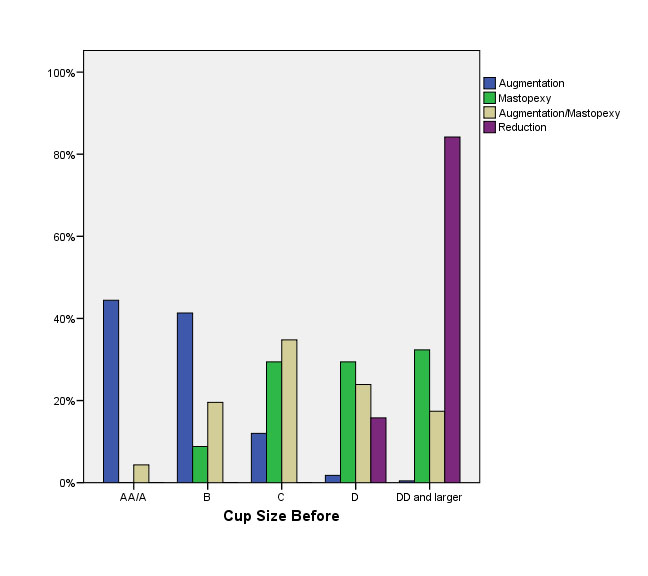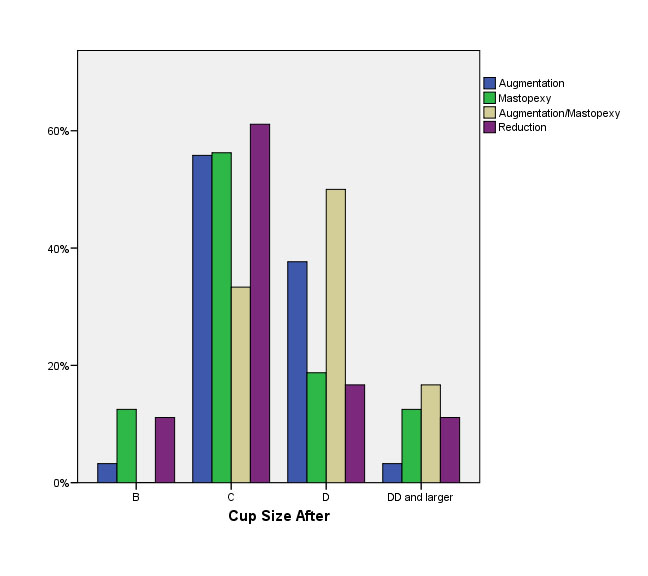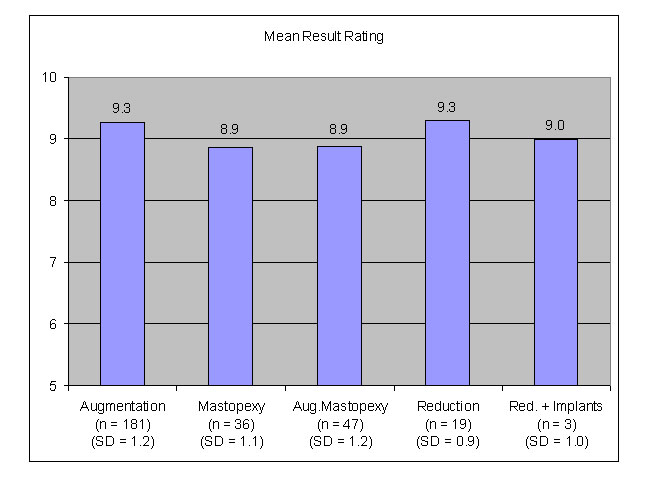Friday, October 31, 2008
14563
Five-Year Prospective Outcome Study in 325 Cosmetic Breast Surgery Patients
PURPOSE: Although past prospective outcome studies have evaluated breast augmentation or reduction, there have been no previously published prospective outcome studies that include mastopexy and augmentation/mastopexy patients. It is important to evaluate these groups because mastopexy patients have been a source of difficulty. Furthermore, concern has been raised about doing a mastopexy and augmentation in combination and in treating patients secondarily. Patients often ask about the amount of pain and recovery time. These questions are important in terms of patient expectations and planning and need to be answered specifically in terms of relevant activities of daily life and based on patient-reported data. They have not been assessed in previous outcome studies. This prospective study evaluates and compares 4 cosmetic breast procedures – augmentation, mastopexy, augmentation/mastopexy, and reduction. This study is part of a four-pronged evaluation of female cosmetic breast surgery patients, which also includes a prospective clinical study, a photometric study of breast morphology, and a photometric study of mastopexy/reduction publications.
METHODS: Over a 5-year period, January, 2002 to September, 2007, 394 consecutive female patients underwent 406 cosmetic breast procedures. A total of 331 interviews were conducted with 325 patients for a response rate of 81.5 percent, using an in-person interview conducted by one of the nurses. A vertical technique was used for all mastopexies and breast reductions. Questions were asked in 6 categories: patient data, indications, recovery (including discomfort level), results, complications, and psychological effects. A follow-up study was included to determine duration of nipple numbness (fig. 1). Patients who completed the breast augmentation survey were also asked to look at a page of photographs of a patient who underwent a breast augmentation, before, one month, and three months after surgery, to determine preferred breast proportions
RESULTS: Patients reported using prescription analgesics an average of 5.4 days, resumed driving in 5.8 days, returned to work 7.5 days, and felt “back to normal” in 27.8 days. The mean length of time patients needed assistance after surgery was 3.1 days, help with their children 5.0 days, and return to full exercise, 36.9 days. Patients reported being able to sleep comfortably on average 19.5 days after surgery.
Pain rating was moderate overall (5.4/10), higher for breast augmentation (5.9) and lower for breast reduction (3.3) (fig. 2) Both mastopexy and breast reduction patients reported a significant reduction in physical symptoms after surgery (p < 0.001). Bra cup sizes are shown in figures 3 and 4. The mean results rating was 9.2/10, similar (p > 0.05) for all procedures (fig. 5). Almost all patients (326/329, 99.1 percent) would “do it again.” Breast augmentation and reduction patients were most inclined to find the surgery exceeded their expectations (p < 0.05). The complication rate reported by patients was 40/331 (12.1 percent). All procedures reduced breast self-consciousness after surgery (p < 0.001).
CONCLUSIONS: Almost all patients desire an improvement in the appearance of their breasts, including breast reduction patients. Results ratings were very high (9.2/10), with comparable ratings for breast augmentation, mastopexy, augmentation/mastopexy and reduction. Higher results ratings correlated with larger implant volumes and a lack of complications. Primary versus secondary surgery and smoking history did not correlate significantly with results rating. All four procedures provided a high level of patient satisfaction, improvement in self-esteem and quality of life. Symptomatic improvement was reported by both mastopexy and reduction patients. Nipple numbness was common (42.9 percent) but eventually resolved in 87.9 percent of patients who experienced it. Most patients preferred a convex breast shape.
 Fig. 1. Nipple sensation follow-up study. Mean follow-up time was 29. 4 months (range 2.5 months – 67.9 months).
Fig. 1. Nipple sensation follow-up study. Mean follow-up time was 29. 4 months (range 2.5 months – 67.9 months).
 Fig. 2. Pain rating. Scale of 1 (no pain) to 10 (most severe pain).
Fig. 2. Pain rating. Scale of 1 (no pain) to 10 (most severe pain).
 Fig. 3. Bra cup size before surgery.
Fig. 3. Bra cup size before surgery.
 Fig. 4. Bra cup size after surgery.
Fig. 4. Bra cup size after surgery.
 Fig. 5. Results rating. Scale of 1 to 10.
Fig. 5. Results rating. Scale of 1 to 10.
